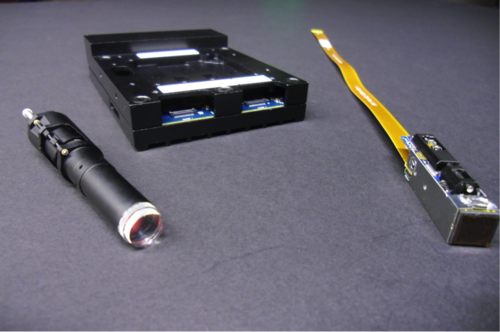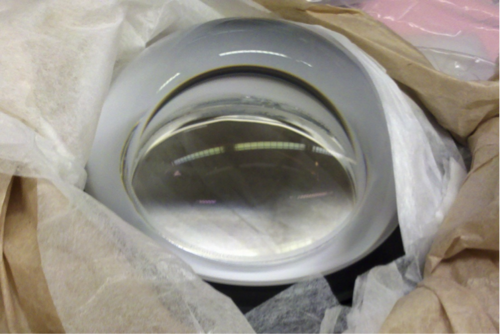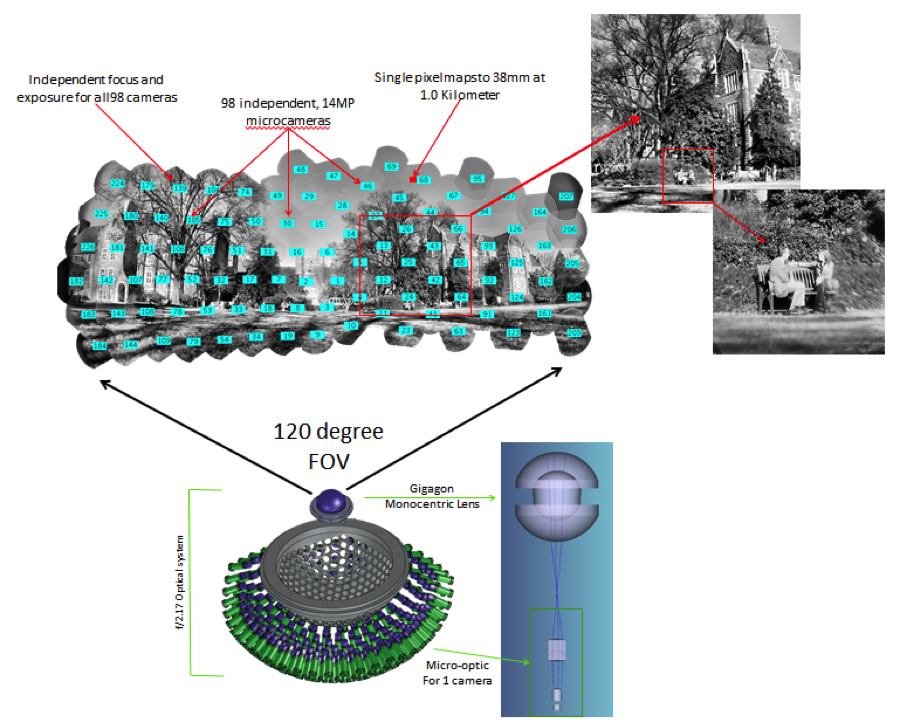
Aqueti has developed a gigapixel camera which was funded by the U.S. government’s Defense Advanced Research Projects Agency (DARPA) for for surveillance purposes, like the drones. A 205-pound camera called the Aware2 consists of 98, 14-megapixel camera lenses, and is 30-inches square by 20-inches deep. Now it is available to public via the Kickstarter campaign.
This imaging system called as supercameras built from arrays of microcameras. Aqueti’s multiscale camera technology implements parallel processing on the microscale to build cameras that capture the field of view of thousands of conventional cameras with a cost and volume comparable to a single system.
- The MC2 microcamera,
- Gigagon spherical objective lenses,
- The Aware macrocamera architecture and
- Zoomcast services.
These technologies incorporate technologies of mulitscale lense design, monocentric optics, focus and exposure control and image data management.
MC2 microcameras use 3D sensor chip integration to allow dense packing of many arrays. Microcamera optics incorporate new aberration control and ultracompact focus and control systems with specialty high performance electronic read-out systems.

MC2 microcamera components
Gigagon lenses are multilayer spherical balls designed to reduce chromatic and spherical aberration while delivering large aperture images to spherical focal surfaces.

Aware 10 gigagon lens
The Aware macrocamera architecture, as illustrated below, overcomes this problem by integrating large arrays of microcameras on a spherical dome surrounding the gigagon lens. Each microcamera may be individually focused on objects within its narrow field of view. Typically, a microcamera observes only 2 degrees out of the 100 degree Aware field.

Aware camera architecture
With Zoomcast services, Aqueti personnel arrive with the Aware2 camera, set it up on-site, and capture images that your guests can access online. Imagine offering attendees the ability to see the big picture – yet zoom in on intimate bouquets of themselves and their friends. The read-out datais performed via Microcamera clusters interface with “microcamera control modules” (MCCMs). Parallel MCCM communication and processing interfaces allow data streaming approaching 100 gigabytes per second. The proprietary gigapixel video data structures, Zoomcast technology, allow this data to be efficiently recorded, processed and communicated for diverse applications.
No comments:
Post a Comment